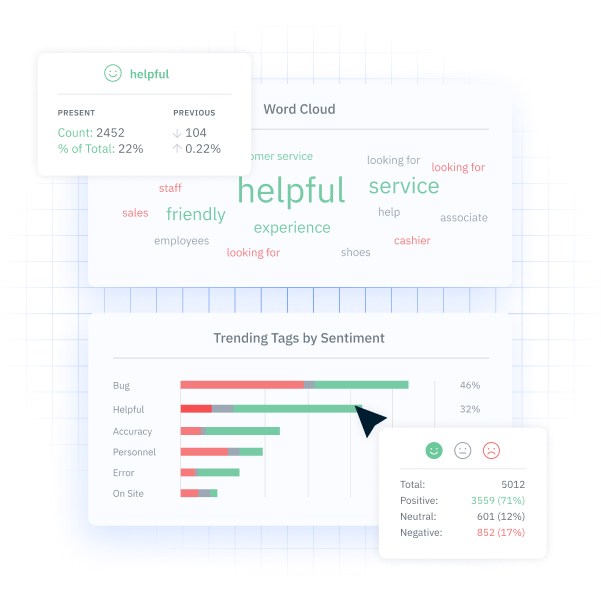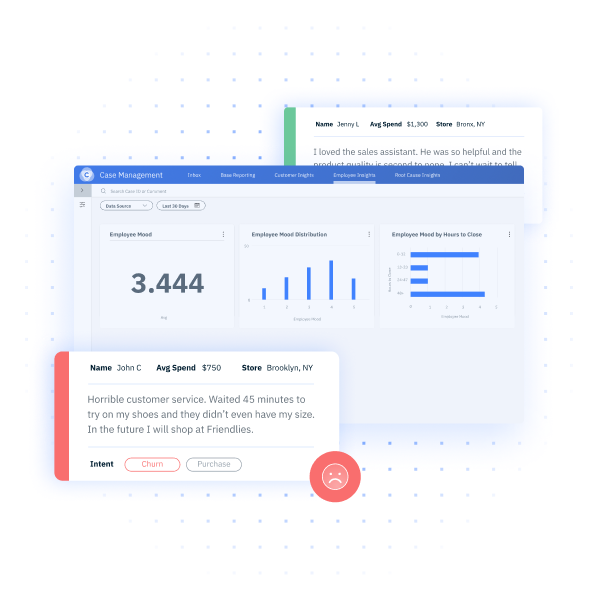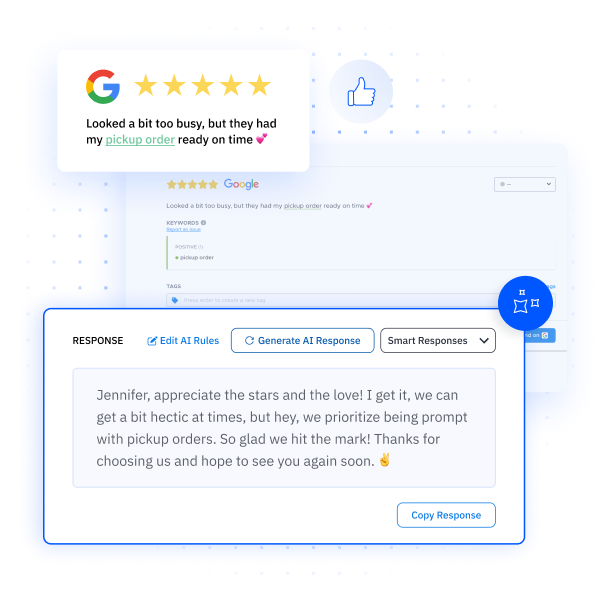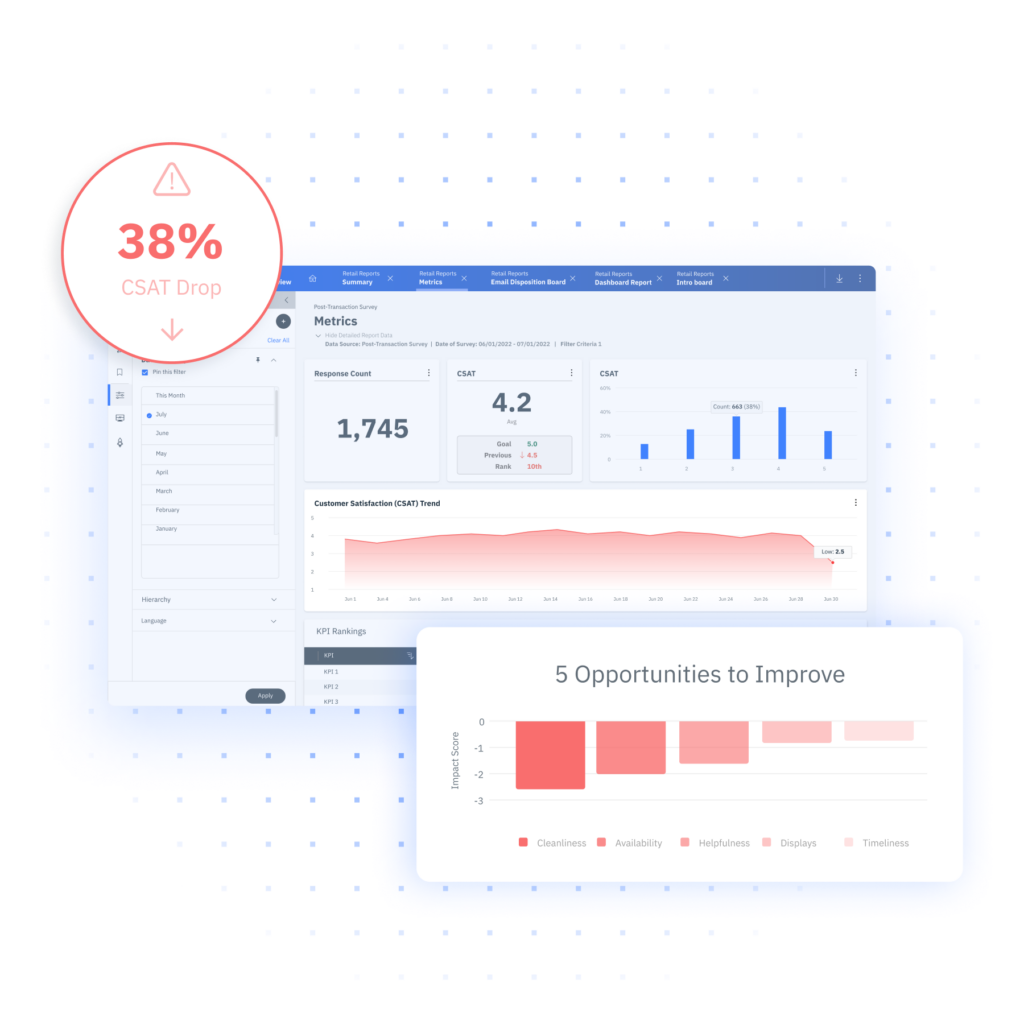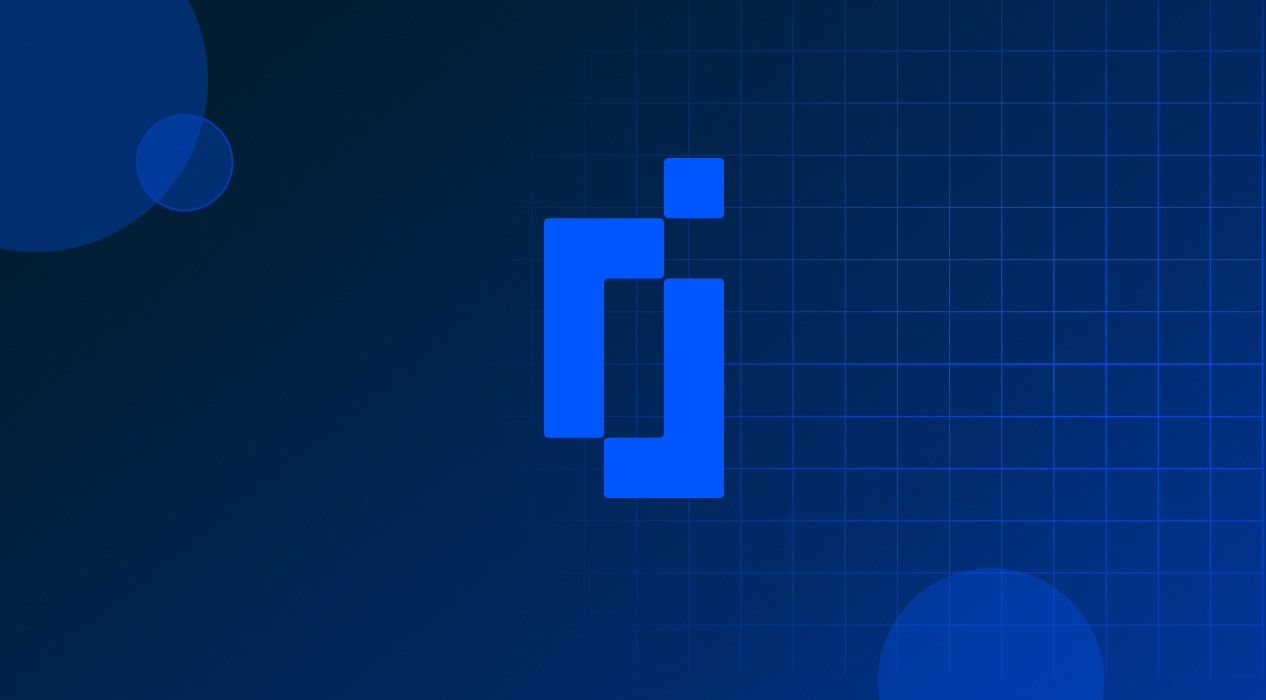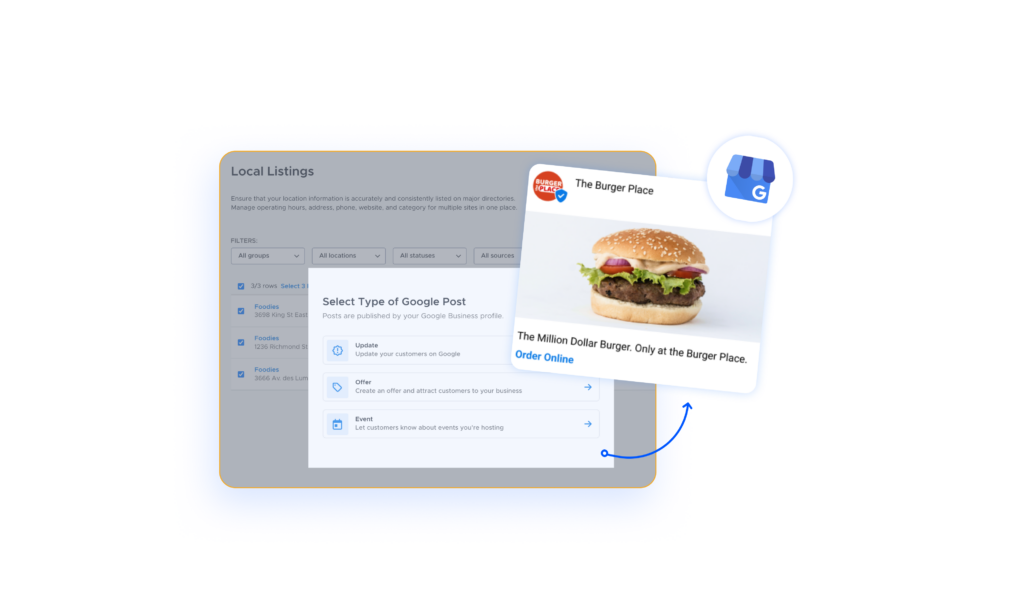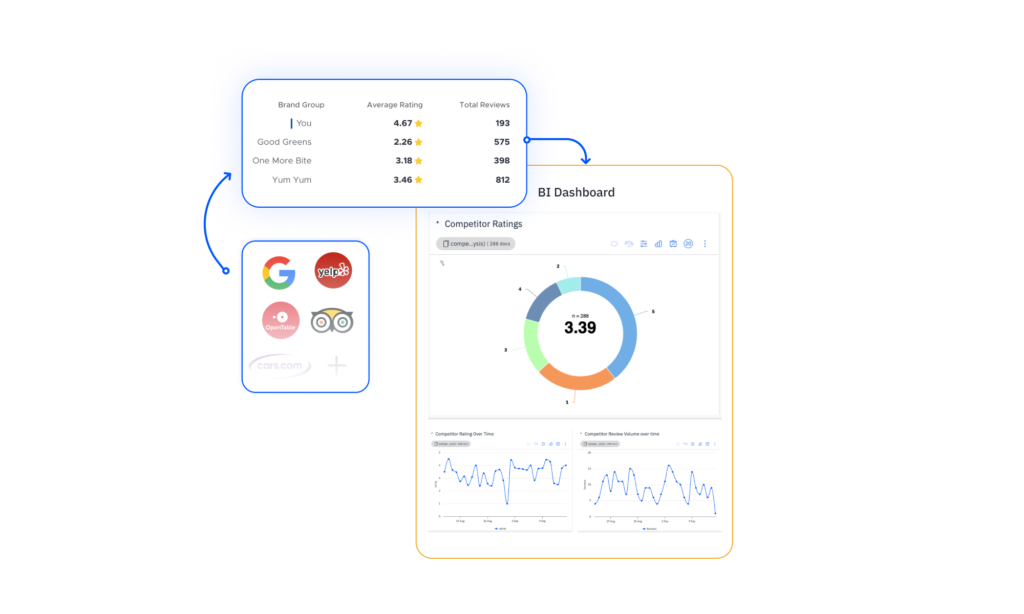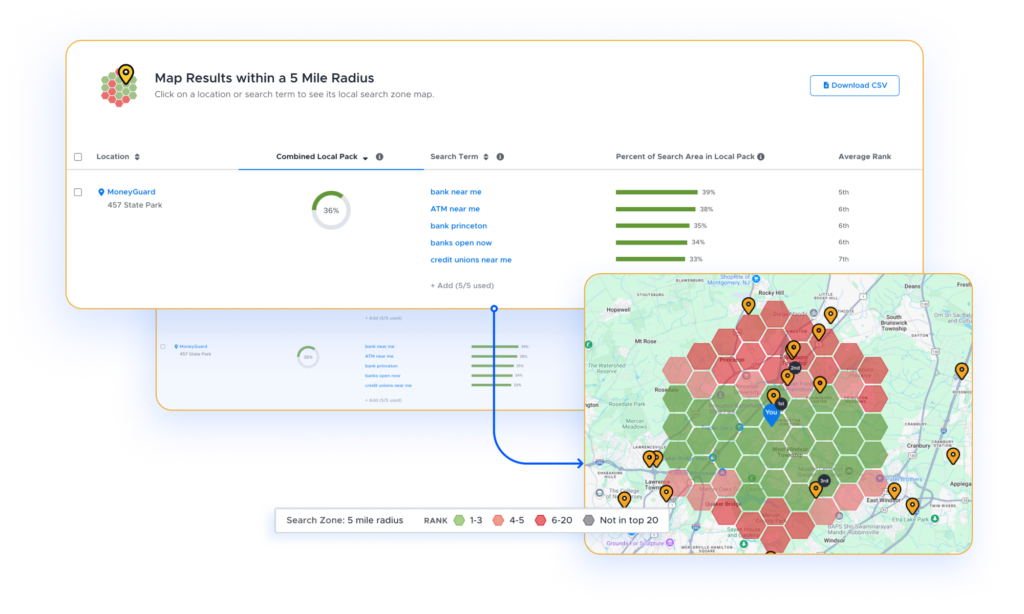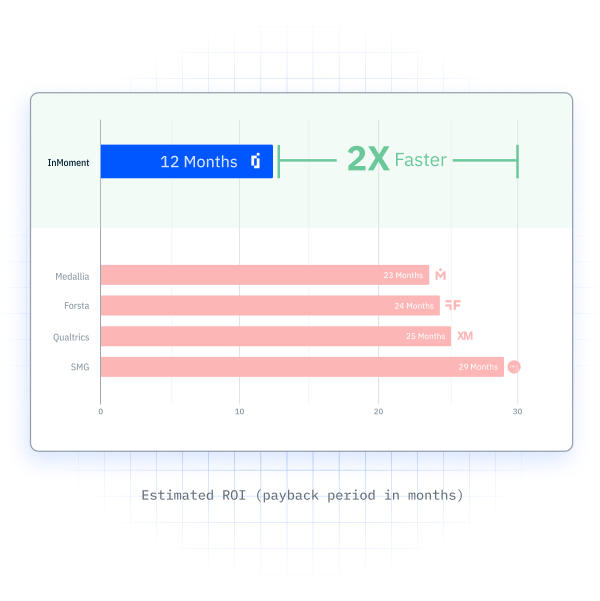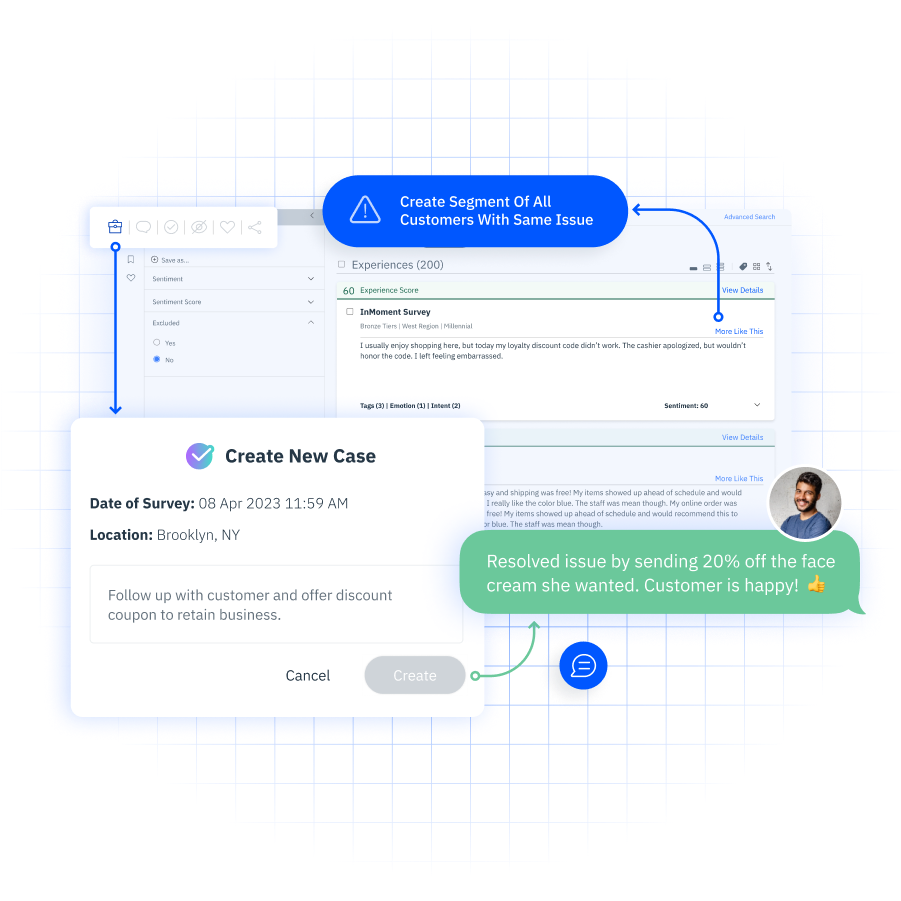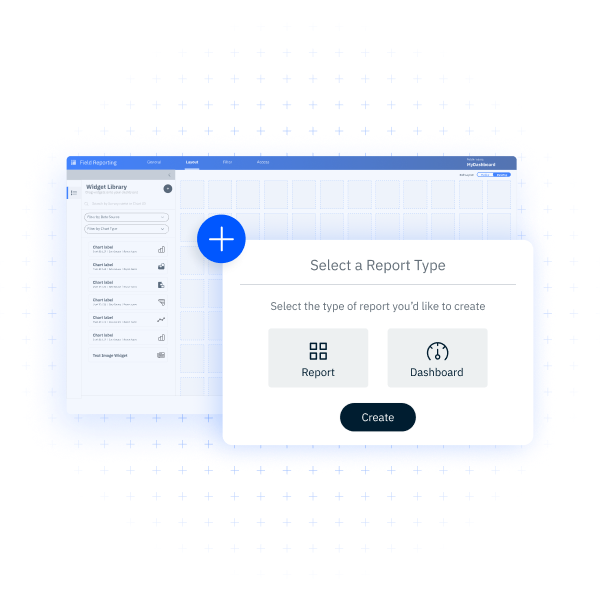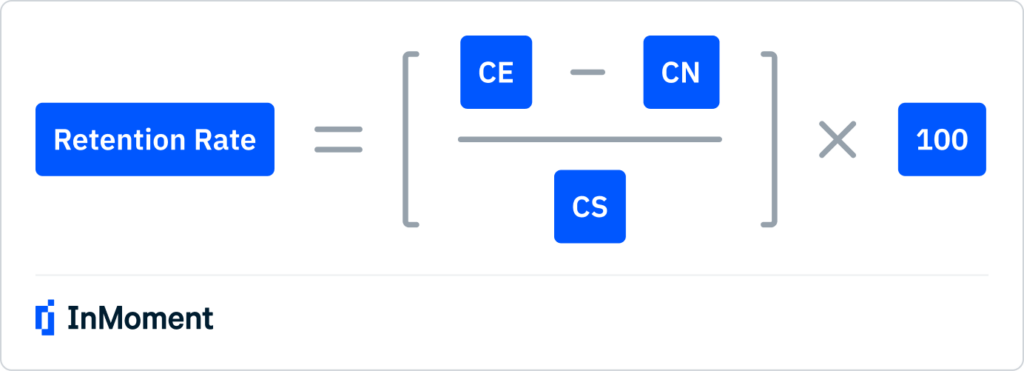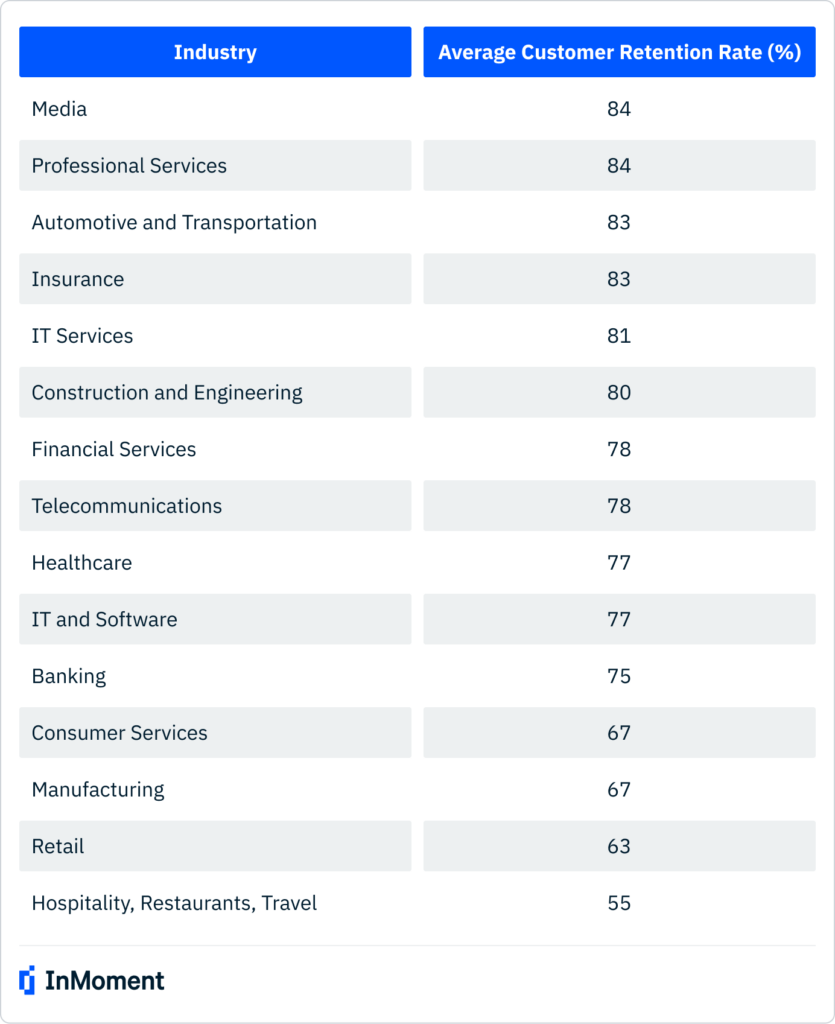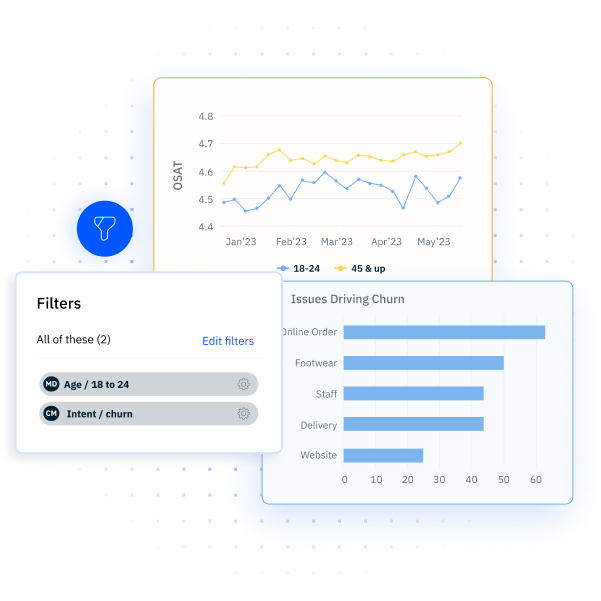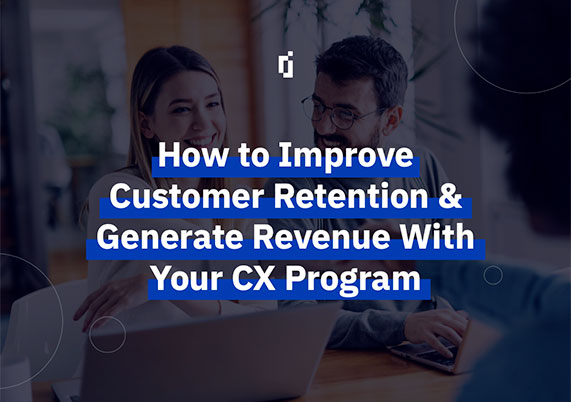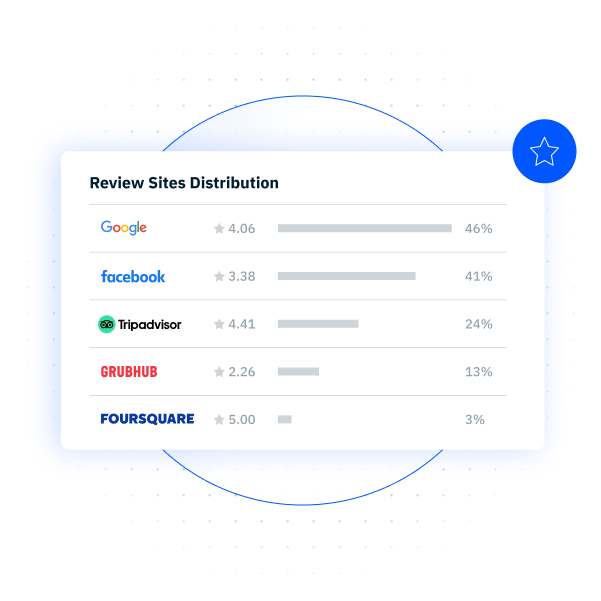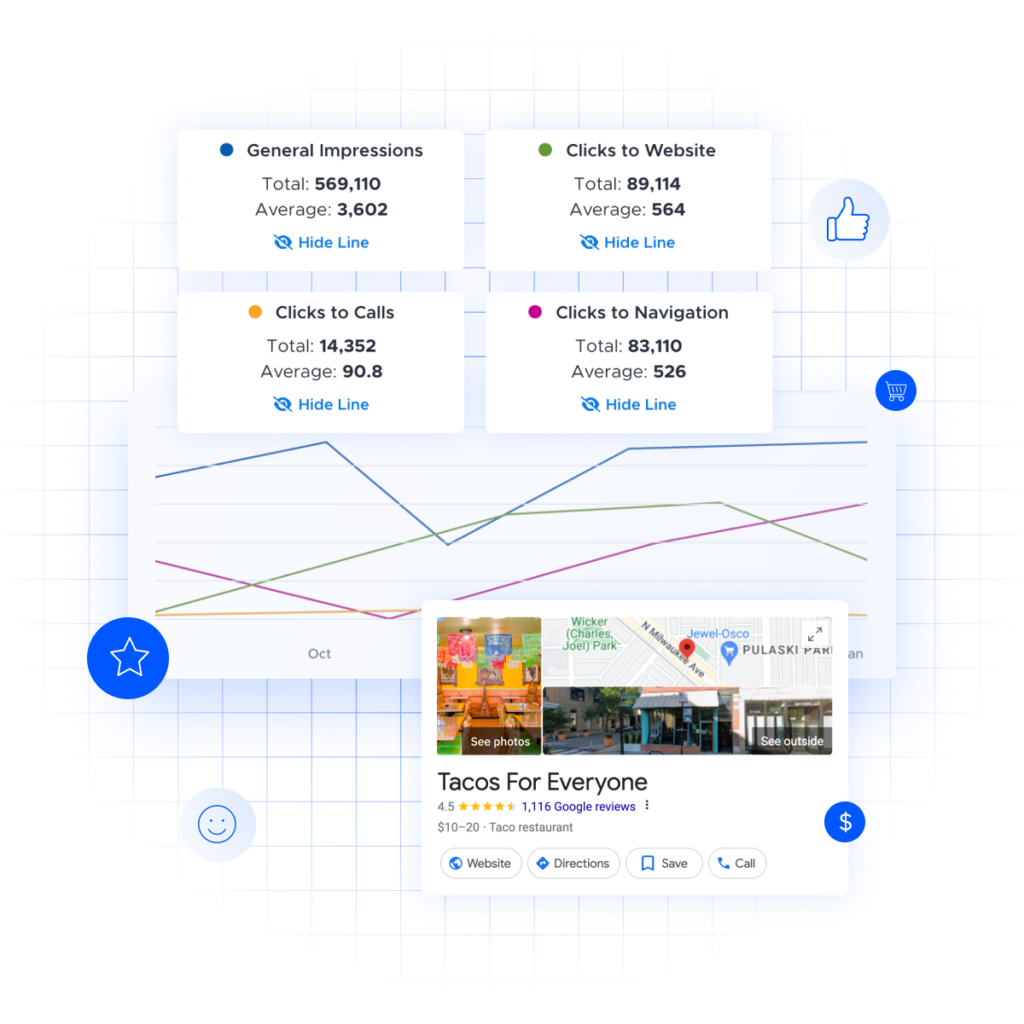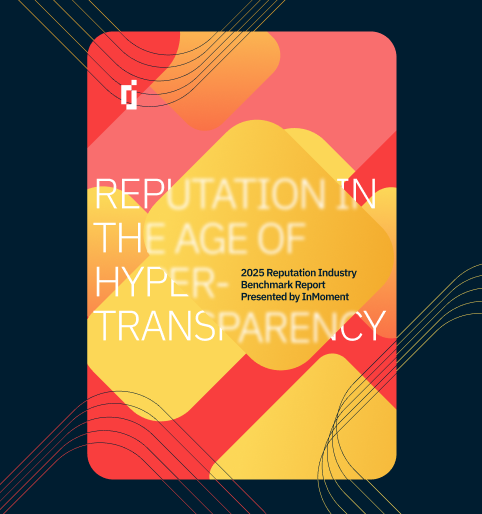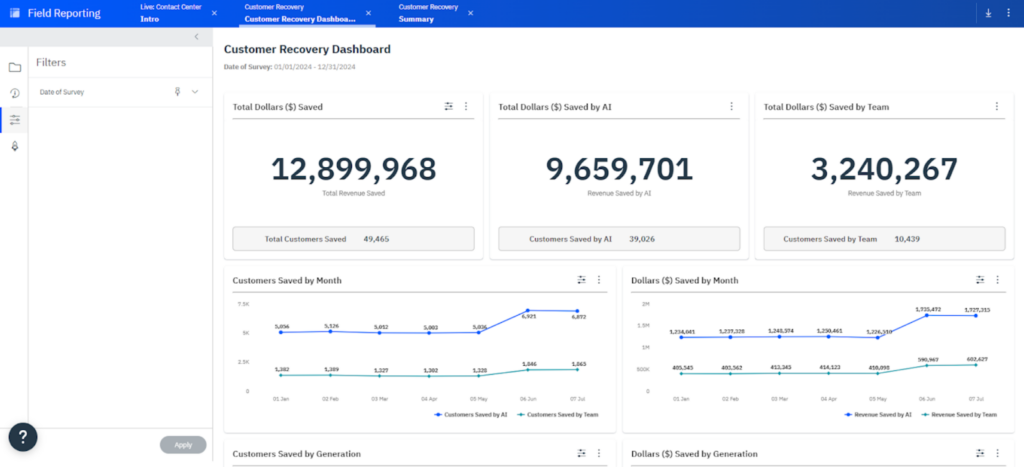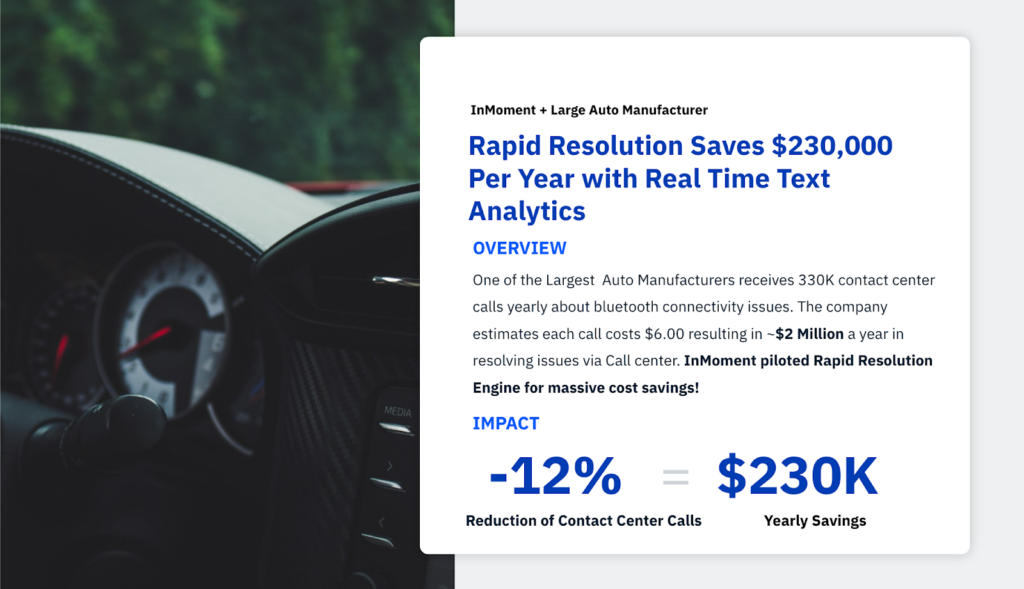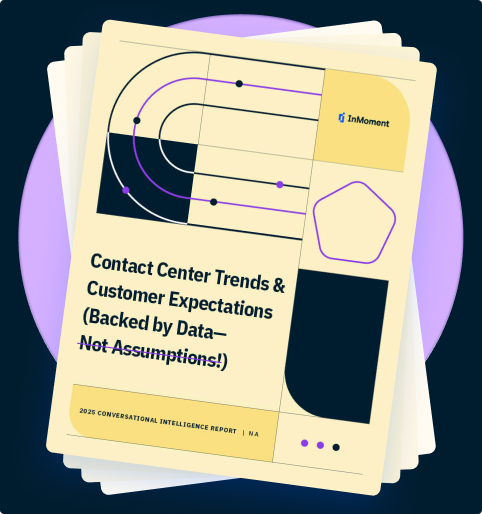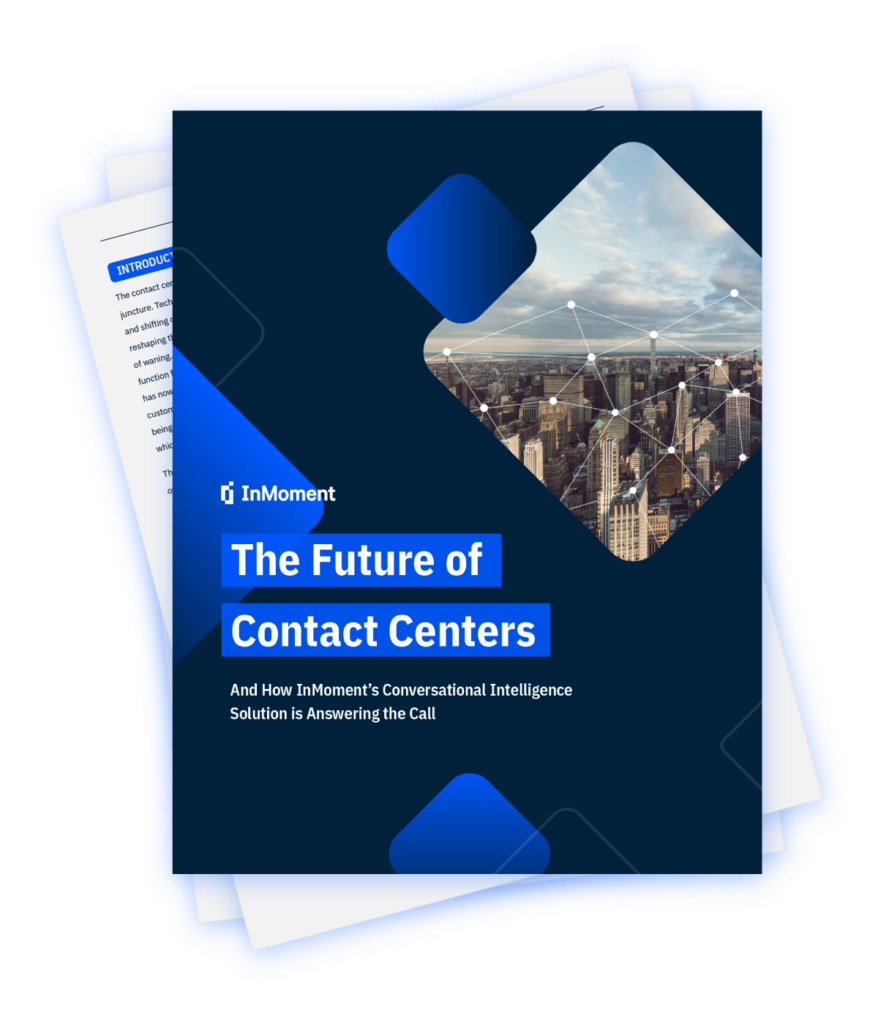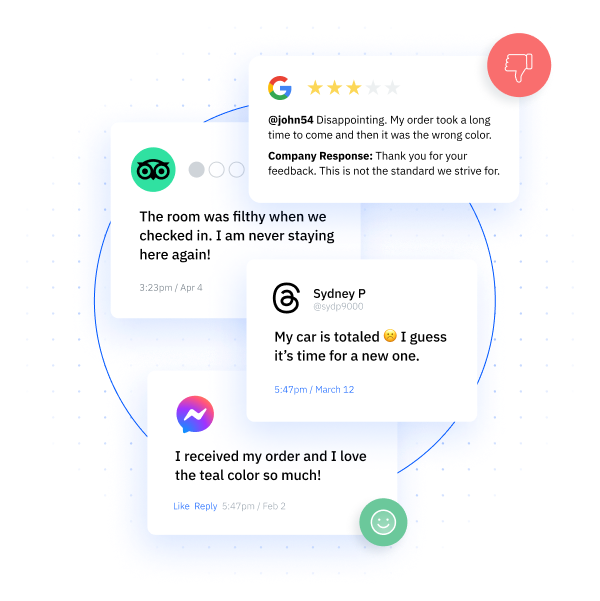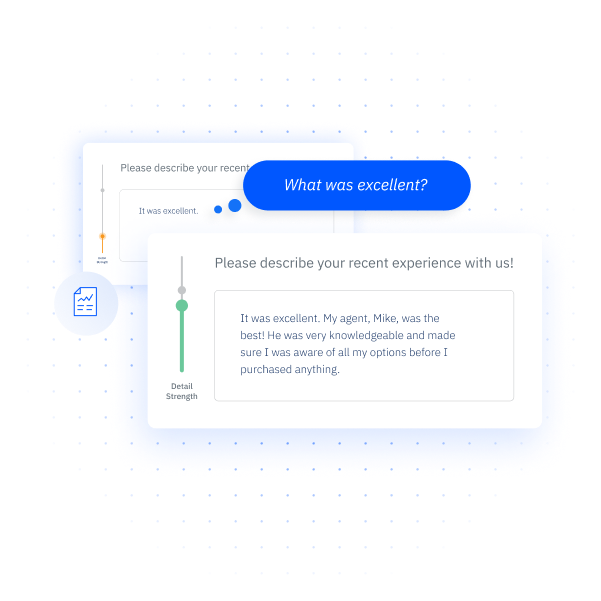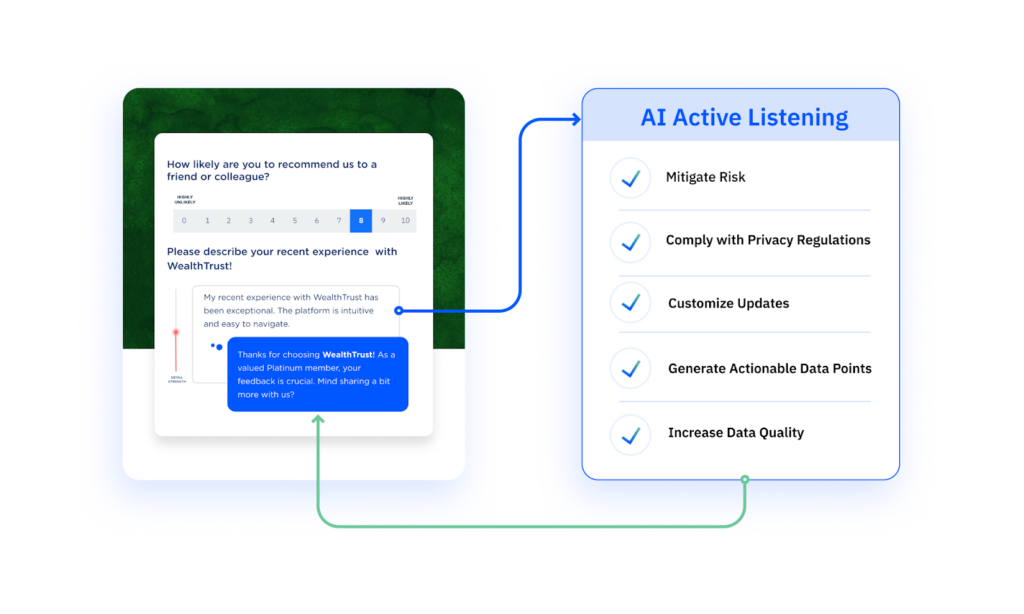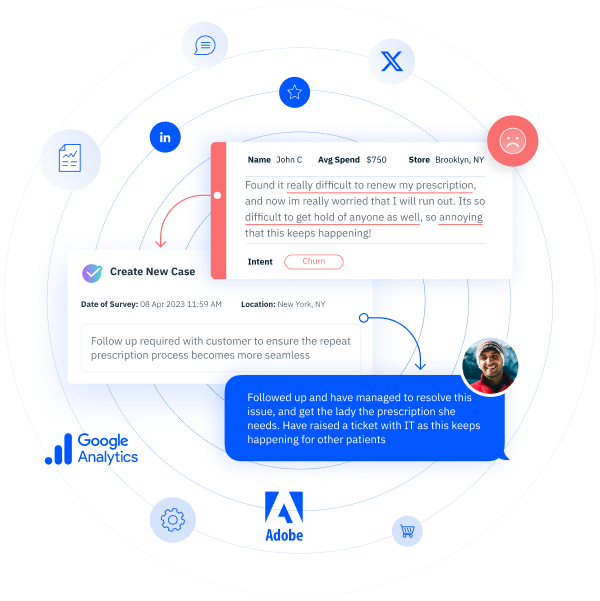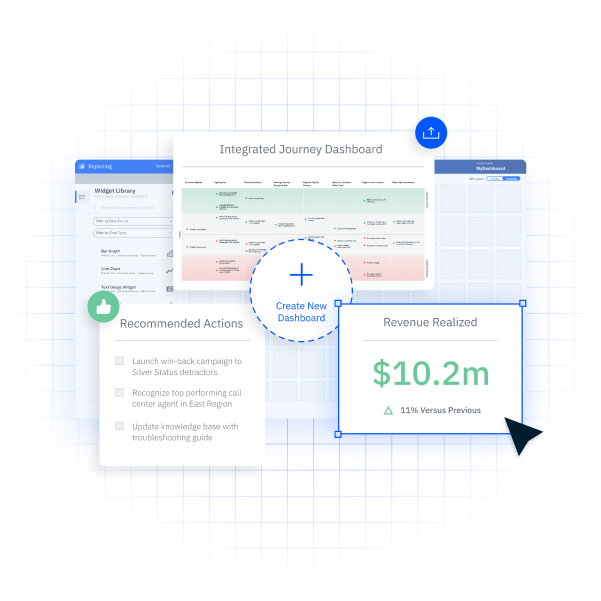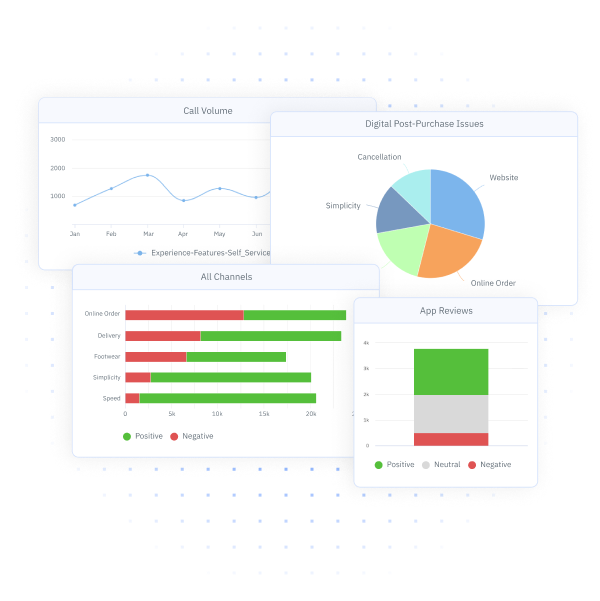How to Collect Customer Feedback to Boost Business Revenue
Collecting customer feedback helps organizations understand their customers better and manage their experiences for positive business outcomes. Focusing on the most effective methods of feedback collection enables you to save time and costs without compromising on the quality of insights you capture.
From onboarding the customer to converting them into a loyal brand advocate, each step of the customer journey is an opportunity to learn how your customer views your business. Are they satisfied with your overall product? Is there anything about your service they wish they could change? How likely are they to recommend your brand to their friends? Knowing how to collect customer feedback is crucial to delivering consistent value as a business and staying ahead of your competition.
Why is Collecting Customer Feedback Important?
Collecting customer feedback is important for businesses because it gives them a roadmap for boosting customer satisfaction and retention. This practice is at the core of a successful customer-centric approach that is impactful for the following reasons:
- It provides insight into customer behavior and expectations. Without an understanding of their customers’ needs and goals, a business might as well be walking in the dark! A clear understanding of your customers enables you to offer personalized services, which is what 60% of customers cite as their reason for becoming repeat buyers.
- It helps pinpoint issues that are hurting your business. Categorizing and analyzing feedback is a great way to identify aspects of your operations that are creating pain points for customers.
- It enables you to manage dissatisfied customers. Collecting feedback is the first step to successful customer experience management. 49% of customers who left a brand they had been loyal to over the past 12 months cited poor CX as their reason. By actively listening to dissatisfied customers, you can resolve their issues more effectively and improve your chances of retaining them or, at the very least, enhancing your brand reputation.
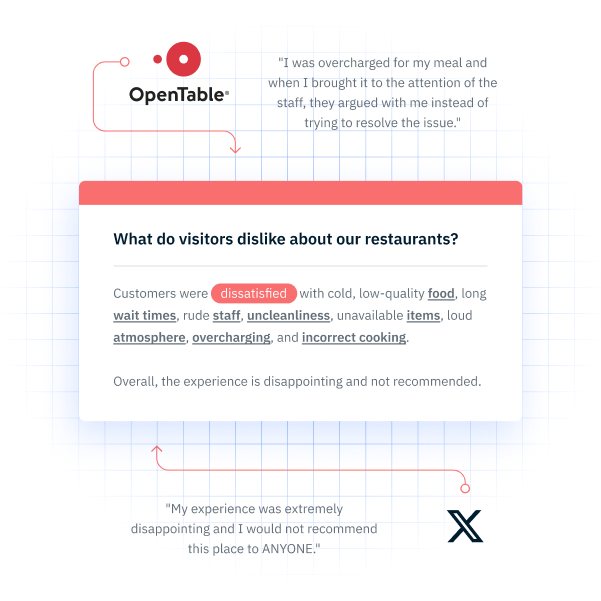
- It helps you retain satisfied customers for the long term. Not only does collecting customer feedback help identify issues, but it also highlights what’s working well for satisfied customers. By continuing to focus on features that have a positive impact, you can improve every aspect of the customer journey.
- It generates ideas for product enhancement. Customer feedback also includes suggestions and feature requests, which can guide strategy on further improving your product to boost business revenue.
- It helps reduce customer service costs for your business. By understanding common challenges for customers and how to resolve them quickly, your business can reduce the time it takes to offer effective customer support. As a result, you spend less on customer service.
Successful Ways of Collecting Customer Feedback
Collecting customer feedback doesn’t have to be tedious or inefficient. The following tried-and-test methods will help you capture actionable insights from your customers so that you can improve and evolve as a business.
- Make it easy to provide feedback. Customers are more likely to complete simple and user-friendly surveys. In fact, once respondents begin a survey, there is a sharp surge in their drop-off rate for each additional question up to 15 questions! Therefore, a good practice is to make your feedback forms and surveys simple and concise. Tools like InMoment’s Survey Builder enable customized survey design to help you capture customer insights easily and quickly while reducing survey fatigue.
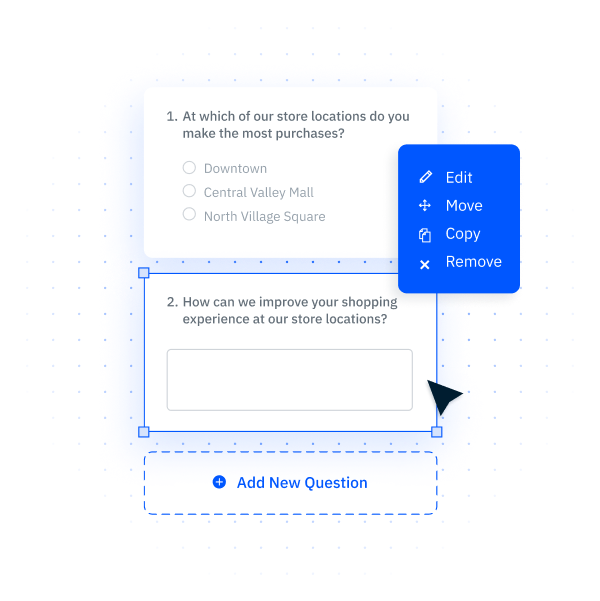
- Ask your customers relevant and impactful questions. Focusing on the right questions helps you keep your surveys concise and gather high-quality feedback. For instance, if you want targeted feedback on your checkout process, you need to query customers on that specific touchpoint instead of asking them about their general thoughts on your business.
- Leverage interactions with customers via live chat. Given that 72% of customers want immediate service, the live chat feature goes a long way toward customer satisfaction. Data from live chat interactions presents opportunities to learn about customer expectations, including common complaints or remarks.
- Use conversational surveys to engage customers in impactful dialogue. Conversational surveys provide an interactive means of collecting feedback from customers. While they can elicit higher-quality feedback due to their mobile and conversational nature, they can be time-consuming to create and manage. InMoment’s AI-powered Active Listening™ feature can simplify this process for you by listening and responding to customers in real-time without the need for human intervention.
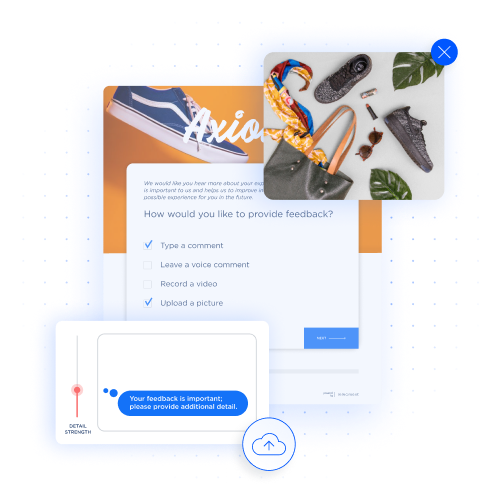
- Collect feedback right after the purchase or service for accurate insights. Asking customers for feedback right after they complete a transaction helps you capture raw and honest thoughts on this key touchpoint. It also strengthens customer relationships, as buyers feel valued when their opinions are taken into consideration every step of the way.
- Monitor social media comments and reviews. Social media is the top choice for US consumers when communicating with brands. Both positive and negative experiences are even more amplified when customers share them with their followers or online networks. A robust reputation management software like InMoment provides a complete picture of social media sentiment toward your brand and helps you generate the best possible responses by leveraging generative AI. These features empower you to make the most of online feedback and use it to enhance your brand reputation.
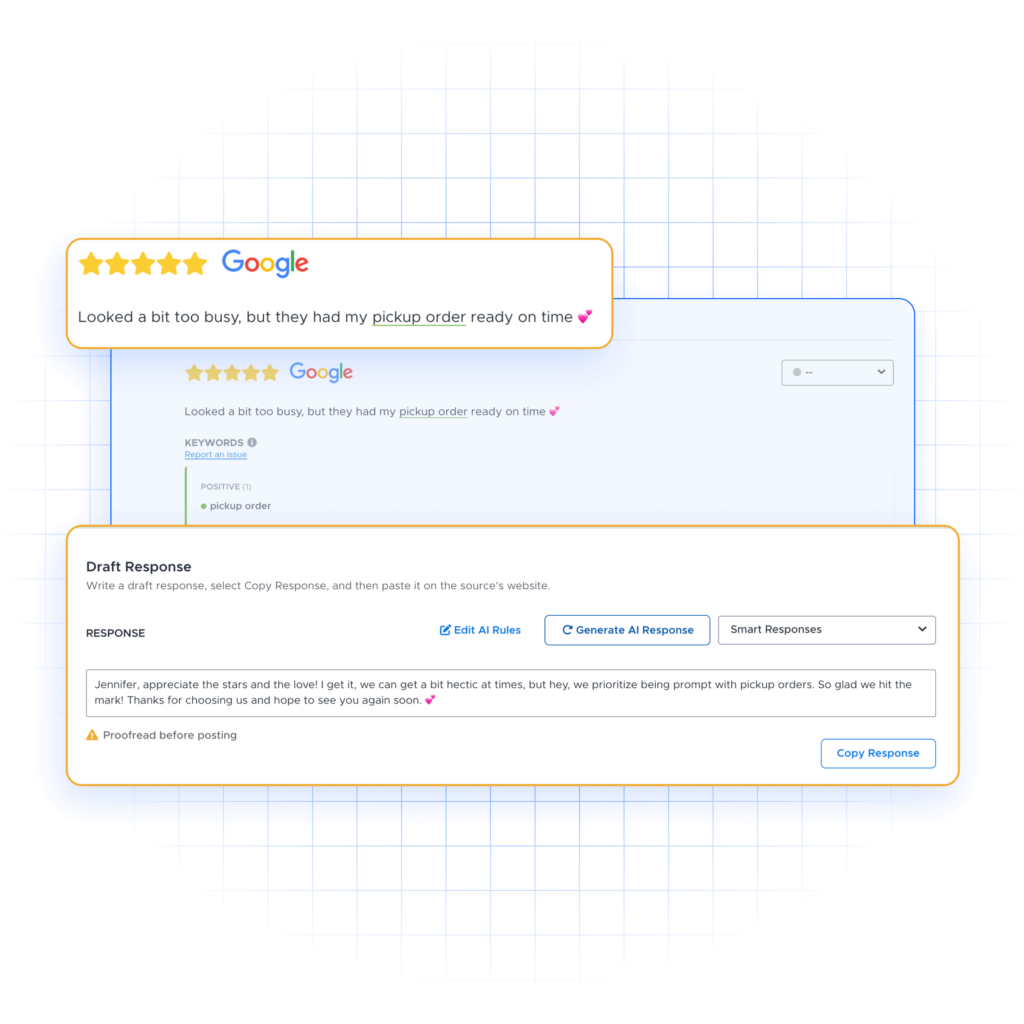
- Connect with your customers via an online community. You can engage with your customers on a deeper level by creating an online community around your product or service. From Discord servers to Facebook groups, these communities provide access to targeted opinions and help boost your brand culture.
- Offer rewards to incentivize customer feedback. Collecting feedback can be challenging when customers don’t feel inclined to do so. One tried-and-tested method of incentivizing feedback is to offer a valuable reward in exchange. From discounts to gift cards, these rewards not only encourage feedback but also foster customer loyalty.
- Integrate feedback forms on your website. Customers like knowing that they have options to express themselves while they are using your product. Adding feedback forms to your website makes it easier to collect your customers’ opinions at crucial touchpoints and gain their trust over time.
- Measure your CX performance. By gathering feedback on how well your customer service team and contact centers are handling customer interactions and resolving issues, you can determine key areas for improvement. This practice helps you continuously improve your customer service and contact center optimization, which results in higher satisfaction and retention rates.

- Use icons and emojis to create short and sweet surveys. Customers might not be inclined to say much sometimes, especially after a neutral or even positive experience. A great way to improve response rates in these cases is to include icons (stars, thumbs up/down, etc.) and emojis that customers can simply click on to express themselves.
- Include in-app feedback collection messages. An in-app request for feedback is convenient for customers as they don’t have to go to a third-party website to provide opinions. It’s also a great way to engage inactive users by sending them notifications for feedback after a certain period of inactivity.
How to Collect Feedback from Clients?
Sometimes, collecting feedback from clients calls for a tailored approach, especially when it comes to distinguishing between B2C and B2B interactions.
Collecting Client Feedback
When capturing insights from other businesses, you want to focus on more detailed and structured feedback collection. Methods like one-on-one interviews, comprehensive surveys, and dedicated online portals help gather specific and detailed context from decision-makers to enhance the B2B customer experience.
Collection Consumer Feedback
On the other hand, B2C feedback collection should prioritize simplicity and convenience while maintaining the quality of insights. This is because B2C clients usually expect quicker and more user-friendly ways to interact with the business or to resolve their issues. Methods like conversational surveys, simple feedback forms, live chat, and social media reviews are proven ways of successfully engaging B2C clients for feedback collection.
Collecting Customer Feedback for the First Time
A good practice for encouraging feedback from first-time customers is to keep it simple. The following feedback metrics enable businesses to quickly identify areas for improvement without intimidating new customers:
- Net Promoter Score (NPS) is a customer loyalty metric that measures how likely customers are to recommend a product or service to their colleagues, typically on a scale of 1-10. Based on the NPS value, customers are categorized as detractors (1-6), passives (7 or 8), and promoters (9 or 10).
- Customer Effort Score (CES) measures how easy it was for customers to perform a specific activity, like placing an order or reaching out to customer support. Typical methods include using a 7-point scale, emoticon survey, or even an open-ended question. A more positive CES score indicates that the customer experienced very little friction in completing a task.
- Customer Satisfaction Score (CSAT) queries customers on how satisfied they are with the product or service, typically on a scale of 1-5. The higher the CES provided by the customer, the more satisfied they are with the business. This metric provides a quick snapshot of customer satisfaction, which is especially useful when collecting feedback from first-time users.
Example Questions to Gather Customer Feedback
The quality of feedback you collect is strongly linked to the clarity and specificity of the questions you ask. Some examples of questions to capture valuable insights from customers include:
- On a scale of 1-10, how likely are you to recommend our productivity app to a friend or colleague? (NPS)
- How easy was it to track your shipment on our website? (CES)
- On a scale of 1-5, how satisfied are you with the overall shopping experience? (CSAT)
- What can we do to make your experience better? (open-ended)
- On a scale of 1-10, how likely are you to recommend our web hosting service for its cost-effectiveness? (B2B NPS)
- Was there anything about your experience that didn’t meet your expectations?
Challenges of Collecting Customer Feedback
Collecting customer feedback is a great way to make your brand stand out, but it comes with several challenges, including:
- Capturing detailed and meaningful feedback. Customers may provide short and vague responses, which can make it difficult to identify specific areas for improvement. For instance, a customer might say, “It was okay,” without going into detail as to what could have been improved. InMoment addresses the challenge of capturing detailed and meaningful feedback. Our patented Active Listening solution overcomes this by using advanced AI to encourage rich, context-driven conversations. This technology allows businesses to understand the reasons behind customer responses, ensuring that feedback is more detailed and actionable.
- Asking the right questions every time. High-quality questions are likely to yield high-quality responses. However, determining the right questions to ask can be quite tricky at times. If the questions are too broad or irrelevant, the feedback may not be useful. Businesses often struggle to come up with questions that will provide actionable data aligning with their goals.
- Managing an overwhelming amount of feedback. The more feedback you collect as a business, the higher the volume of responses and insights you will have to manage. Sorting through and analyzing the data to find common trends or issues can be time-consuming and challenging without proper tools or processes in place. InMoment leverages artificial intelligence, machine learning, and self-serve analytical tools to uncover critical insights, enabling you to explore specific areas of interest within 100% of your experience data from various sources across your business. This saves you and your CX team significant time by eliminating the need to manually sift through large volumes of data to find valuable insights. With our software, your team can focus on prioritizing and executing actions that drive the most impact, enabling you to achieve a faster customer experience ROI.
- Prioritizing feedback for business goals. Even after collecting and analyzing feedback, businesses face the challenge of deciding which insights to act on first. Not all feedback will have the same impact on customer satisfaction or business growth, so prioritizing which areas to address can be difficult.
- Interrupting the Customer Experience. Collecting customer feedback, especially within digital interactions, can be viewed as intrusive, ill-timed, or irrelevant to the customer’s journey. This not only diminishes the overall customer experience but also creates skewed or misleading data. Customers might respond hastily or negatively due to the inconvenience, which can distort insights and lead to inaccurate reporting.
How to Collect Customer Feedback Without Ruining the Experience
To avoid interrupting the customer journey to obtain customer feedback, it’s essential to design requests that are integrated seamlessly into the digital experience—ensuring that they are relevant, timely, and respectful of the customer’s context. This thoughtful approach not only enhances the quality of feedback collected but also reinforces a positive brand experience.
Tip #1: Map Out Possible Site Pathways for Customization
Instead of drafting one intercept survey to serve your entire site, consider all the different touchpoints you want to collect data from and then craft questions.
- Keep in mind how users are browsing your site and craft intercepts around that information. For instance, a feedback tab may be perfect for desktop users, but it’s far too small in size for mobile users. Consider using a banner on your mobile site instead.
- Be creative by using triggers to target specific user groups for feedback. For example, if you want to collect more feedback from customers in a specific state, you can set a trigger based on IP addresses.
- Avoid asking unnecessary questions or irrelevant questions.
Tip #2: Gear Questions Toward the User’s Specific Experience
In order to get the best feedback possible, you have to ask the right questions about the right experience for each type of customer. For instance, a question asking about the checkout experience would be irrelevant to a customer who has yet to make a purchase. Instead, set a trigger for an intercept to appear for a customer with a few lingering items in their bag to learn why they haven’t taken the plunge.
- Keep it simple. Surveys that are too long are less likely to be completed and also take away from the user experience. Try to keep it to a few high-quality questions so you can get the information you need without losing your customer’s attention.
- Revisit the map of possible visitor pathways you created to help prescribe questions to specific user situations. The more tailored your questions can be to a customer scenario, the better. For example, you can ask specific questions targeting those who use the mobile site in order to improve the mobile design and experience.
- Don’t have a survey form pop up right away.
Tip #3: Give Customers Time to Provide Informed Feedback
The phrase “garbage in, garbage out” is especially relevant when you’re collecting data; if you aren’t collecting quality feedback, your insights won’t create real business impact. This is why it’s especially important to give your customers the opportunity to navigate your site before asking them to give you feedback.
- Strategically place a feedback tab or another always-available channel on the website for instant feedback. This way, customers have the ability to provide you with feedback outside of the triggers you’ve set up.
- Set up an intercept for customers who have lingered on the site for some time but haven’t made a purchase or reached out. This allows you to check in and see if they have any questions or concerns.
When setting up a method to collect customer feedback, consider whether it will enhance or disrupt your customer’s experience. By ensuring that each question adds value and contributes to a positive interaction, you position yourself to collect more meaningful feedback and insights, ultimately leading to a greater business impact.
Make Collecting Customer Feedback Easy with InMoment
Collecting customer feedback is a powerful tool for transforming your business, especially with its positive impact on customer relationships and brand reputation. From AI-powered conversational surveys to effective social media monitoring, InMoment helps you make the most of every piece of insight you collect from your customers. To see how you can simplify the feedback collection process for your business, schedule a demo today!
References
Zendesk. 35 customer experience statistics to know for 2024. (https://www.zendesk.com/blog/customer-experience-statistics/). Accessed 10/01/2024.
SurveyMonkey. Does adding one more question impact survey completion rate? (https://www.surveymonkey.com/curiosity/survey_questions_and_completion_rates). Accessed 10/01/2024.
Emplifi. 11 key things consumers expect from their brand experiences today. (https://go.emplifi.io/us-uk-customer-expectations-report.html). Accessed 10/02/2024.




